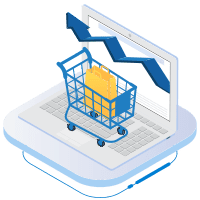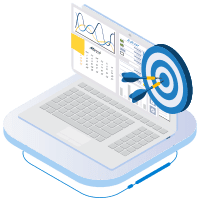
Uncertainty Is the New Normal for Retailers
If 2020 and 2021 taught retailers anything, it’s that uncertainty is the new normal. We’ve seen uncertainty with demand, customer behavior, and the supply chain.
For retailers, the old way of dealing with demand was to buy excess inventory to fulfill stores for a given period. Now, with the impact of COVID-19 and the supply chain crisis, this strategy is unavailable. Likewise, consumer behavior has changed dramatically over the last few years, further challenging retailer’s strategies for fulfilling consumers’ needs.
These uncertainties within the retail industry, however, are just scratching the surface. Now more than ever, it is essential for retailers to tap into the latest trends, listen to their consumers, and invest in the world of technology. In just a few short weeks, RetSci will be attending NRF 2022, Retail’s Big Show, to meet with top brands and retailers, and discuss major industry trends as we head into 2022.
Here are the topics we are most excited to discuss at NRF:
1. Channel Development & the Growth of E-Commerce.
2. Leveraging New Customer Data.
3. Advanced Supply Chain Infrastructure.
4. Sustainability & Transparency.
5. Improved Planning.

1. Channel Development & the Growth of E-Commerce
The phrase “omni-channel” has been a buzz word for years, but has recently become even more prevalent following the restrictions from COVID-19. Brick and mortar stores were the most obvious channel being impacted, putting one-dimensional retailers in serious jeopardy. To some, however, these restrictions proposed an opportunity for new offerings through e-commerce channels, going in both directions.
Two examples of channel flexibility include:
– Delivery services: This market emerged in the tail end of 2021 and will certainly carry over to 2022. This area is most seen in the form of food delivery with ingredients, pre-made meal plans, and restaurant delivery options. Something to look for will be how companies like Tovala and HelloFresh impact grocery sales.
– Increase in returns: A natural consequence of the increase in e-commerce sales is an increase in returns. For fashion apparel especially, sizes and colors are tough to gauge for the average consumer, and retailers will benefit from preparing these returns.
2. Leveraging New Customer Data
COVID-19 has pushed retailers to invest in the omnichannel experience. The shift to digital has resulted in retailers capturing data they have never had access to before.
For grocers in particular, online grocery platforms can track past purchases, view substitutions the consumers made within their online cart, monitor items removed from their cart, and more. This impressive amount of data allows for grocers to see into their consumers’ brains in ways they couldn’t have done with in-person shopping. The result? A need for more sophisticated targeted promotions.
The benefits of leveraging new customer data with targeted promotions:
– Influence shopping behavior
– Increase sales
– Create more lifetime loyalty customers
3. Advanced Supply Chain Infrastructure
As retailers brace for the increased demand for e-commerce channels, the next step is to seek a competitive advantage in this domain. From procurement, to manufacturing, to delivery, retailers will be looking for enhancements to each of these areas.
Here are a few examples we are excited to discuss:
Increasing speed of delivery
Consumers are expecting orders to be delivered faster than ever. While it is difficult to match amazon’s 2 day delivery, it would behoove certain industries to implement new methods for speeding up delivery. Some include:
– Off-premise and dark/ghost kitchens for the food industry.
– Privatizing transit methods.
Automation and new technologies in manufacturing
An alternative method to speed up the delivery time is to manufacture more efficiently. Companies are investing in new ways to add automation to get the edge on their competition: on-demand production is a method of creating what is demanded, when it is ordered. This adds speed and creates a leaner manufacturing process.
4. Sustainability & Transparency
Green production practices are becoming critical. Each year, more companies are committing to net-zero emissions. Not only is this great for the planet, but also for the brand’s reputation.

Transparency
Customers want to be in the know. Companies will be working to pull the curtain between the customer and their operations to form lasting relationships.
– Product transparency (ingredients, sourcing, etc.)
– Delivery and order tracking
Reducing carbon footprints
Companies are becoming more mindful of their environmental impact in both manufacturing and transportation.
– New technologies
– Alternative transportation methods
Reducing waste
While availability is of a high concern to capture the demand as sales, this cannot be at the expense of having excess waste.
– Effective demand planning and optimized delivery schedules.
– Creative ways to use excess goods, rather than wasting them.

5. Improved Planning
No one can predict the future with 100% accuracy, but forecasting to a high degree can do wonders for reducing waste, improving availability, and optimizing company resources. We are interested to hear how fellow industry leaders are combating challenges around forecasting and where the benefits can be found across industries.
Factors impacting forecasting
Most forecasts take in past events and data to extrapolate a plan for the future. Some challenges to consider are:
– External impacts (weather, population fluctuations, price)
– Promotional uplift
Value added from accurate forecasts
All industries can benefit from a degree of forecasting, but as forecasting experts, we’re interested to learn about how different industries can get value from different forecasts. Some include:
– Financial planning
– Procurement planning
– Demand forecasting

